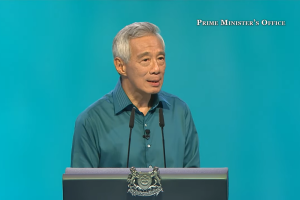Filipino cuisine, an amalgamation of diverse culinary influences, has become increasingly popular globally. However, the question of whether Filipino food is healthy often arises. This is especially given its frequent use of high-fat, sugary, and salty ingredients.
In this article, we’ll examine the health aspects of Filipino cuisine. We also provide suggestions for making it a more wholesome dining experience.
The Balancing Act: Nutritious Staples vs. Indulgent Dishes
Filipino cuisine boasts an array of nutritious ingredients, such as fresh vegetables, lean meats, and seafood. Staple dishes like sinigang, a sour soup rich in vegetables, and tinola, a ginger-flavoured chicken soup, provide essential nutrients while being low in calories.
On the other hand, popular dishes like lechon, deep-fried pork belly, and kare-kare, an oxtail stew thickened with peanut sauce, are high in saturated fat and salt. Additionally, Filipino desserts, such as halo-halo and leche flan, are laden with sugar.
Taking a Healthier Approach: Smart Swaps and Techniques
- Choose lean proteins: Opt for lean cuts of meat. These include chicken breast or fish, instead of fattier cuts or processed meats. Dishes like chicken inasal, a marinated grilled chicken, or grilled fish with a side of ensaladang talong, an eggplant salad, are healthier options.
- Reduce salt and sugar: Limit the use of salty condiments like soy sauce and fish sauce. Opt for natural flavour enhancers, such as calamansi, a Filipino citrus fruit. For desserts, consider fruit-based options like buko pandan salad or fresh mango with sticky rice.
- Opt for healthier cooking methods: Chose dishes that are made with grilling, steaming, and stir-frying. This can significantly reduce the fat content in dishes, compared to deep-frying or sautéing.
- Incorporate more vegetables: Add extra vegetables to your favourite Filipino dishes. An example would be adding more greens to sinigang or using a variety of vegetables in pancit, a Filipino noodle dish.
- Use whole grains: Swap white rice with brown or red rice. Also, choose whole grain noodles or bread to increase fibre intake.
Embracing Tradition with a Healthy Twist
Traditional Filipino cuisine includes a wealth of healthy options that showcase the country’s abundant produce and fresh seafood. However, modern adaptations and fast food chains have contributed to an increased prevalence of obesity, diabetes, and hypertension in the Philippines. According to a 2018 study by the Food and Nutrition Research Institute, 22.3% of Filipino adults were overweight, and 5.1% were obese.
Promoting healthier versions of Filipino dishes is crucial in tackling these health issues. Chefs and home cooks alike can experiment with innovative recipes that maintain the essence of Filipino cuisine while adhering to healthier guidelines.
Conclusion: A Vibrant, Healthier Culinary Future
Filipino cuisine, with its rich cultural heritage, offers a wealth of flavours and ingredients for food lovers in Asia and the Middle East. By making conscious choices and incorporating healthier cooking techniques, we can enjoy the best of Filipino cuisine while prioritising our well-being. As awareness grows, we can look forward to a vibrant culinary future that celebrates healthier, more nourishing Filipino dishes.













